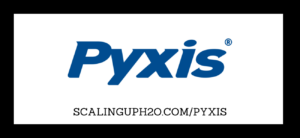“What’s the most economical, acceptable, compliance-based solution?”
In our latest podcast episode, we sat down with returning guest Michael J.  Soller P.E. CPC, DBIA the Vice President of Business Development at Bowen Engineering Corporation. Michael shares his deep expertise in compliance, problem-solving, and project management in the treatment of industrial wastewater discharge. Drawing from his technical paper titled “Treatment of Aerospace Machining and Inspection Wastewater,” published through the International Water Conference (IWC), Michael’s insights offer valuable lessons for both seasoned professionals and newcomers to the field.
Soller P.E. CPC, DBIA the Vice President of Business Development at Bowen Engineering Corporation. Michael shares his deep expertise in compliance, problem-solving, and project management in the treatment of industrial wastewater discharge. Drawing from his technical paper titled “Treatment of Aerospace Machining and Inspection Wastewater,” published through the International Water Conference (IWC), Michael’s insights offer valuable lessons for both seasoned professionals and newcomers to the field.
What was the challenge in treating aerospace machining wastewater?
Michael’s team was tasked with solving a unique and complex problem: treating wastewater from aerospace machining and inspection processes, which included both oily and chemical-laden water. The challenge? The wastewater had a makeup that was difficult to treat using standard industrial methods due to high variability in water quality, coupled with strict environmental regulations.
Michael explains, “The project demanded an innovative approach to remove oils, emulsifiers, and heavy metals, all while ensuring that we met the discharge standards set forth by regulatory bodies.” His team had to develop a custom treatment system that could handle the specific composition of the wastewater and still operate efficiently on a day-to-day basis.
How was the technical problem solved?
Michael’s approach revolved around advanced treatment technologies. His team implemented a combination of physical separation processes, chemical treatment, and membrane filtration to address the variable wastewater composition. They also designed the system to operate within tight environmental discharge limits.
“We needed a solution that was flexible yet robust enough to consistently meet compliance while accounting for changes in water makeup,” he says. His team’s strategy of using adaptable treatment methods ensured that the system could be fine-tuned as needed without sacrificing performance or sustainability.
How Can We Ensure Compliance in Wastewater Management?
Michael walked us through a crucial aspect of industrial water treatment: staying in compliance with local discharge standards. Daily monitoring, regular equipment maintenance, and thorough record-keeping are essential. As Michael put it, it’s a simple equation: “Either they’re in compliance or they’re not.”
One standout example is how his client wisely operated at a 60-70% capacity rather than pushing their system to 100%. This allowed room for planned maintenance and unexpected issues without jeopardizing compliance. Michael highlighted the importance of planning for maintenance, saying, “They know they’re going to have variability, so they plan accordingly.” This proactive approach minimizes the risk of being caught off guard and incurring fines or downtime.
Managing Projects Without Sacrificing Capacity
In industrial projects, there’s often a temptation to “value engineer” and eliminate extra capacity to cut costs. Michael shared a compelling example of how a customer made a deliberate choice to avoid this pitfall, ensuring they had the necessary leeway to maintain and repair equipment without maxing out their system’s capacity.
For customers who may be hesitant about building in extra capacity, Michael recommends having an honest and clear conversation about roles and responsibilities. He stresses that clients must make the final decision, but it’s the engineer’s job to provide accurate data and practical recommendations.
Lessons for Future Industrial Water Projects
Michael’s work on aerospace wastewater treatment offers practical lessons for other industries facing similar challenges. From early collaboration with key stakeholders to thorough pilot testing of treatment methods, Michael stresses the importance of meticulous planning.
“One of the biggest lessons we learned is to engage with the operations team from the beginning. Their input is invaluable in designing a system that will work smoothly in practice,” Michael points out. By incorporating feedback from plant operators and end-users, his team was able to build a solution that not only met environmental regulations but also aligned with operational needs.
Dive Deeper into Michael’s Paper
For those interested in a more technical dive, you can access Michael’s full paper, “Treatment of Aerospace Machining and Inspection Wastewater,” linked in our show notes. It’s a must-read for anyone tackling similar industrial water challenges or looking to enhance their knowledge of specialized wastewater treatment processes.
As always, stay curious, stay informed, and keep scaling up your knowledge with us!
The Scaling UP! H2O Team
Timestamps
01:00 – Trace Blackmore thanks you for the privilege of receiving the AWT Innovation Award
02:30 Trace Blackmore’s top 5 items to do to ensure you have faith in your test equipment
11:30 – Catching up with returning guest Mike Soller, P.E. CPC, DBIA
17:30 – Interview with Mike Soller on his paper “Treatment of Aerospace Machining and Inspection Wastewater”
50:00 – Drop by Drop With James McDonald
Mike Soller Quotes
“When we understand what the client’s business goals are and the fact that they need water to do what they’re going to do, and wastewater or used water, finish with what they’ve got, then we can come up with better economical, schedule driven, and operationally driven solutions.”
“When you understand the constituents and you understand the volumes, you can start working with it.”
Connect with Michael J. Soller P.E. CPC, DBIA
Phone: +1 317 519 4327
Email: msoller@bowenengineering.com
Website: https://www.bowenengineering.com/
IWC Conference website: eswp.com/water/overview/
IWC Conference Speaker and Presenter videos: eswp.com/water/iwcspeakers/
LinkedIn: Michael J. Soller P.E. CPC, DBIA
Links Mentioned
307 How to Publish a Technical Paper
International Water Conference (IWC)
American Associated Cost Engineers’ Article 18R-97
The Rising Tide Mastermind
Scaling UP! H2O Academy video courses
National Design Build Institute of America Conference
Water Collaborative Delivery Association – Fundamentals of Collaborative Delivery
Books Mentioned
The Greatest Salesman in the World by Og Mandino
The Patriots: Alexander Hamilton, Thomas Jefferson, John Adams, and the Making of America by Winston Groom
Think Again: The Power of Knowing What You Don’t Know by Adam Grant
Drop By Drop with James
In today’s episode, I have a challenge for you. The challenge is…calculate the Holding Time Index on your cooling towers. Notice I said “towers” in plural. This is something you should know about all your cooling towers. My first question for you is what is a Holding Time Index, and why is such a calculation important. What information do you need to calculate it? The Holding Time Index can also be called the half-life or retention time. It is a measure of how much time it takes for a chemical that is added to a system to be diluted to 50% of its original concentration due to blowdown and possibly other water losses. This can be particularly important for biocides since some require longer contact times than others to be effective. Fast-acting biocides may only require a contact time of half an hour, while slow-acting biocides may require several hours. The Holding Time Index can also be important for polymers in a system as well. A high Holding Time Index means the polymer will be in the system longer, which could lead to the polymer losing its effectiveness as it is bound up or degraded. The equation for the Holding Time Index isn’t a hard one. It is simply 0.7 multiplied by volume and divided by the blowdown rate. Be sure the unit of measure for volumes are the same for both the cooling tower volume and its blowdown. For example, use volume in gallons if your blowdown rate is gallons per hour or gallons per minute. Lastly, the units of time that your final answer will be expressed in will be whatever follows the word “per” in the blowdown rate. If you used gallons per hour, you Holding Time Index answer will be in hours. If you used gallons per minute, your Holding Time Index answer will be in minutes. Now go out there and calculate those Holding Time Indexes!
Events for Water Professionals
Check out our Scaling UP! H2O Events Calendar where we’ve listed every event Water Treaters should be aware of by clicking HERE.

